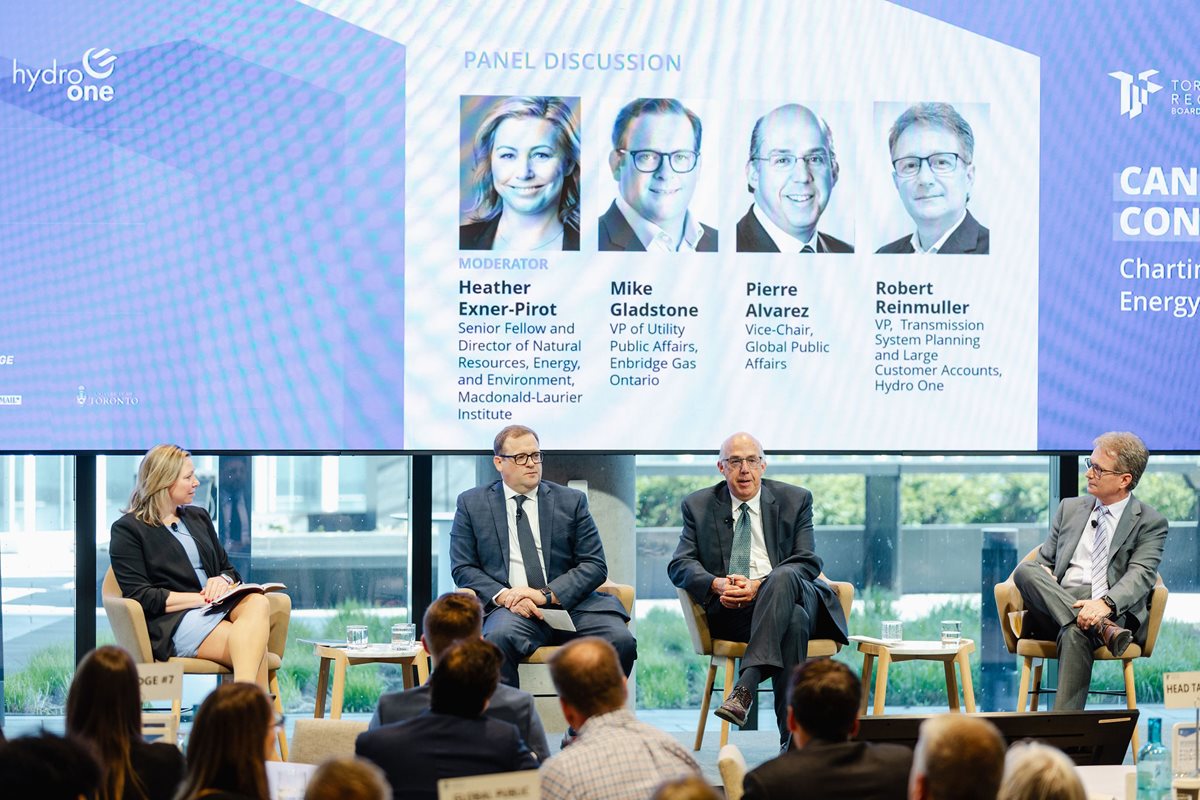
Can Canada restore its status as a national energy and resources superpower? That was the focus of the Toronto Region Board of Trade's Canada Connected event on May 7.
Building a national energy corridor is a long overdue and monumental national economy-building project—a once in a generation opportunity to bind the country together through a unified energy strategy.
That’s why the Board brought together government, business, and energy leaders for a focused discussion on how to unlock the capital, policy alignment, and regulatory reform needed to get this done. As our President and CEO, Giles Gherson said:
“We’ve already seen what fragmented planning and slow approvals can cost us; opportunities lost, jobs delayed, and emissions up. The solution has been talked about for years, without action. But today, there’s no time to lose: align jurisdictions, fast-track permits, build the backbone.”
We heard many times during our event, this is not a matter of ambition, it is a matter of execution. It begins by clearing the path for investment, creating east-west connections, and recommitting to the foundational idea of Canada as a connected, collaborative country.
This is a nation building exercise | A national energy corridor would reconnect our country, not just physically, but economically. It would fast-track pipelines, transmission lines, and railways unlocking Canada’s potential to become an energy superpower.
A nation wired for power, waiting for connection | Canada does not lack investment opportunity, but unless we remove interprovincial trade barriers and overhaul outdated infrastructure, tax, and regulatory frameworks, we risk squandering a generational opportunity. Fixing this means streamlining approvals, aligning jurisdictions, and clearing a path for capital.
Energy is our competitive edge | With the right strategy--making maximum use of hydrocarbon development--Canada can attract the capital to be a magnet for clean energy investment. A corridor would unlock billions of dollars in new projects, create high-value jobs across the country, and drive long-term prosperity. But we need to act now.
Ontario has a responsibility to lead | As we heard from Minister of Energy and Mines, Stephen Lecce, Anyone who advocating for the status quo is living in another time. Ontario is stepping up to support western and eastern Canada to get resources to market. That includes examining a new deep-water port in James Bay, supporting pipeline and electricity expansion and driving hard on critical minerals development.
60%
Forecasted increase in Ontario’s electricity demand by 2043, driven by electrification of transportation, buildings, and industry.
$125 billion
Estimated investment needed to modernize and connect Canada’s energy infrastructure over the next 20 years.
$40 billion
Annual clean energy investment potentially at risk due to regulatory uncertainty and permitting delays.
83%
Ontario’s current electricity supply comes from non-emitting sources, demonstrating existing strength in clean energy generation.
5-7 years
Typical permitting timeline for major energy transmission projects, a key bottleneck identified by speakers and policy leaders.
“If we want to lower emissions, attract investment, and build sovereignty, we need infrastructure that can move clean electrons across provinces. The energy corridor is essential for that. It’s about reliability, not just renewables. Nuclear, hydro, and gas have to play together. And we have to get honest about timelines. We can’t afford a 10-year approval cycle when our competitors are building in two.”
– Heather Exner-Pirot, Senior Fellow and Director, Natural Resources, Energy and Environment, Macdonald-Laurier Institute
“There’s an opportunity here to do something nation-building and that doesn’t come around often. We’re at an inflection point where certainty, coordination, and communication matter more than ever. Markets hate indecision. The clearer we are about project timelines and what success looks like, the more private capital will come off the sidelines.”
– Mike Gladstone, VP of Utility Public Affairs, Enbridge Gas Ontario
“Our job is to be ready. That means mapping out where demand will come from and making sure our infrastructure can meet it. The corridor we’re talking about isn’t just about today’s grid. It’s about tomorrow’s growth: EVs, hydrogen, clean industry. We have to build ahead of the curve, not behind it. That’s how we keep the lights on and attract the next generation of investment.”
– Robert Reinmuller, Vice President, Transmission System Planning and Large Customer Accounts, Hydro One
“We’ve done this before. Think of the TransCanada Pipeline, how it linked this country east to west. The same ambition needs to drive us now. But we can’t assume governments will always lead. Industry has to step up. That means early engagement, a commitment to Indigenous partnerships, and relentless focus on outcomes. Energy security is economic security.”
– Pierre Alvarez, Vice-Chair, Global Public Affairs


